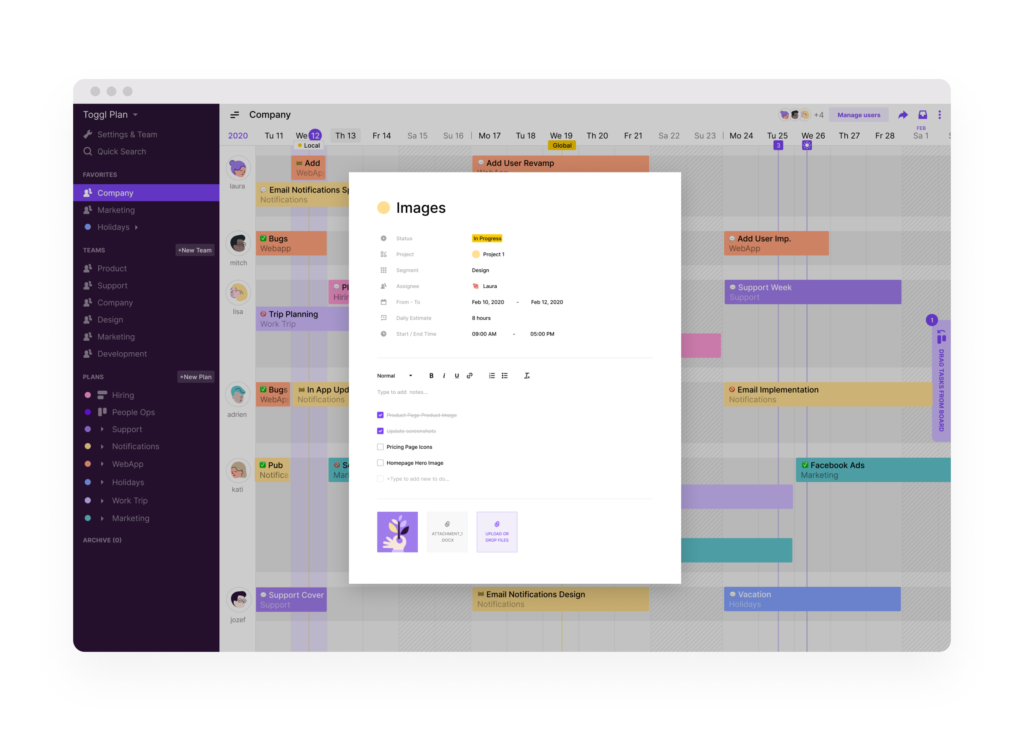You know you’re a project manager when…
- Everything is vitally important
- There’s never enough time in the day to finish everything that needs to be done
As counterproductive as it sounds, too many companies select and initiate projects in a siloed manner. Everything is decided on a department by department basis with no idea of the general strategic impact, making it difficult for the proverbial left hand to know what the right hand is doing, and vice-versa. When projects are planned and launched in this manner, you can count on the following problems:
- Multiple projects competing for the same resources, such as staff and technologies
- Goals and deadlines clashing
It’s frustrating, but in today’s business climate, it’s also the natural order of things. As a project manager, it’s your job to manage the team’s workload and meet deadlines. These eight tips can show you how to prioritize projects so that delays are the exception instead of the norm and achieving business objectives is no longer a balancing act.

Share this image on your site!
1. Get a Project Overview
If you want to make informed decisions, you require the big picture. This is where project management software like Toggl Plan can help. Toggl Plan includes visual planning resources like Gantt charts, which provide color-coded, easy-to-follow timelines. You can review project status at a glance, making it easier to allocate resources in a priority manner. As goals shift, you can react quickly and focus your team’s energy on whatever project is the most urgent.

2. Assemble Deadlines
When you receive yet another project, open whatever project management software you use and input the new assignment’s requirements, recommended resources, and deadline. In this case, noting the deadline is the crucial part. Projects with a more imminent due date should be given priority unless your supervisor or the client has indicated that the deadline is flexible.
3. Assess Project Value
When you’re juggling multiple urgent projects, you have to consider how the results of each one will benefit your company. For example, projects for a client who accounts for one-third of the company’s billings will typically carry more weight than a one-time initiative with a minimal financial reward.
Open your project management software, look at each assignment on your plate and ask yourself how much value it delivers to your company. Remember that value is a relative term: while many businesses give their bottom line top priority, others emphasize customer service or employee satisfaction and efficiency. You may need to have a conversation with upper management to get the insights needed to assess project value accurately.
4. Identify What Needs to Be Done Now
Some projects are more urgent or carry more weight than others. An urgent project needed to be done yesterday, figuratively speaking. An important one still has a certain level of priority but isn’t as critical.
Urgency can also apply to prioritize individual tasks within your projects. As you review each timeline, see if any high-priority dependencies require immediate completion of a particular task. If failure to do something will have significant negative consequences, such as a missed product launch date or a lost opportunity to appear in a prestigious industry publication, give that responsibility your immediate attention.
![]()
5. Prioritize Tasks By Effort
If you have multiple tasks that all seem to have equal priority, rank them in order of estimated completion time. Depending on which productivity expert you ask, it’s beneficial to either get more difficult tasks off your plate first or check smaller tasks off your list to build a sense of momentum before you throw yourself and your team into something more time-consuming. There’s no right and wrong way to do this step- let your personal work style be your guide.
6. Communicate with Team Members and Stakeholders
Having a conversation with team members, company management, and even the client (if multiple projects are for the same stakeholder) can yield the information you need to rank project or task priority more effectively. Using reports and visual aids generated by your preferred project management software, present your recommendations, get their feedback on your conclusions, and make adjustments that support efficiency.
7. Be Flexible
Project management is a field where you can expect the unexpected at any time. A task or even entire project can lose its urgency in a split second for many reasons. Perhaps a critical team member falls sick or leaves the company, putting everything on hold until you locate a replacement. Maybe the client wants to make changes to improve the business value of the project. Whatever the reason, you need to be alert and flexible enough to assess the new workscape, decide what steps need to be taken to remain on deadline for still-active projects, and create a new action plan.

8. Beware of Saboteurs
When you’re trying to prioritize your projects, beware of people who can derail your efforts, intentionally or otherwise. They include:
- The micromanagers who keep changing their mind and tend to add two weeks of extra work on projects due in two days.
- Well-meaning team members who insist on changing some aspect of the project at the last minute to follow a new standard they “just read about”.
- Individuals with agendas who want you to prioritize a project solely because it benefits them personally.
How you deal with these individuals will depend on your relationship to them (you don’t want to indulge in an extended headbutting session with your boss), but any priorities that don’t support the success of the company or the client need to be disregarded or negotiated.
As a project manager, one of your most significant challenges will always be accurately prioritizing your work. You may have powerful project management tools, but you’re still the one who has to make the decisions. Not every project can be a top priority. In the end, knowing how to prioritize projects calls for equal measures of experience, understanding, and intuition. When you let them guide your final decisions, you’re more likely to get the best results for the client, your team, and yourself.
Rose Keefe is an author and technical writer who has over ten years’ experience in supporting project managers in the manufacturing and construction sectors. One of her primary responsibilities was developing product manuals that supported efficient use of industrial equipment. She continues to write on the subject of time management and commercial productivity for trade websites and publications.


